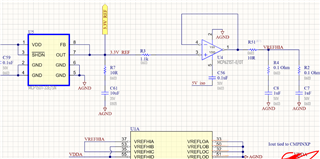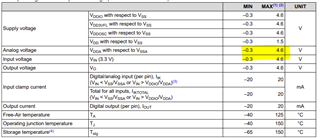Other Parts Discussed in Thread: OPA350, OPA365
Hi all,
I'm using the TMS320F28379D but only plan to use two ADC channels (A and C). The user guide states that a buffer op amp is necessary, so I selected the MCP651 since it's cheaper than the OPA350 recommended by TI. I attached my schematic below. I have a 3.3V 0.1% accuracy reference that's buffered by the MCP651 and then finally to the 1uF with series resistance recommended by TI for 12 bit operation.
- Why do I need a high frequency op amp here? Why can't I choose a cheaper, low-drift, high dc performance op amp to buffer the reference?
- Is the MCP621 okay here? That user guide says OPA350/OPA365 or similar, but I want the cost of the op amp to be <$2.
- What is the load at VREF that needs an op amp here to buffer? Is it the DAC? I just want to be clear on the purpose of the op amp.
Thanks so much,
Jimmy
P.S. I had a look at the following link, but still have the questions listed above.
e2e.ti.com/.../replacement-for-opa350-as-reference-buffer-for-adc




